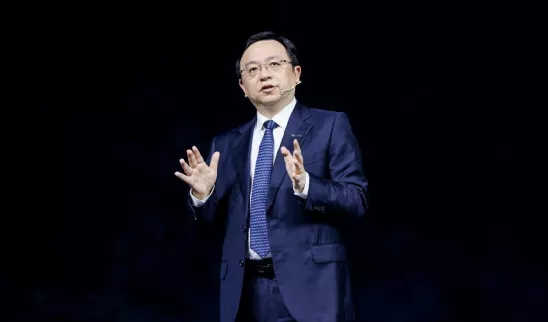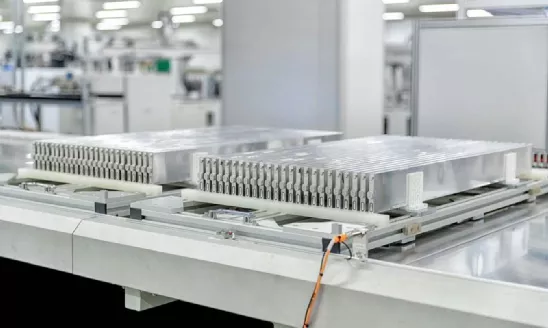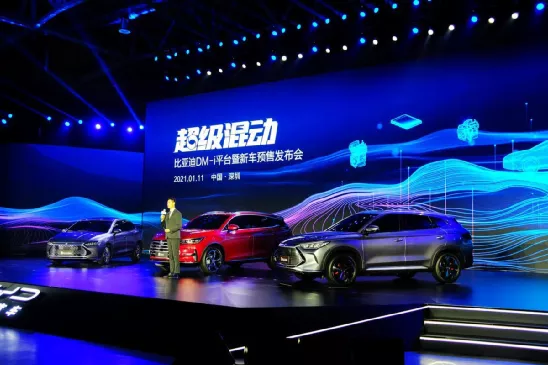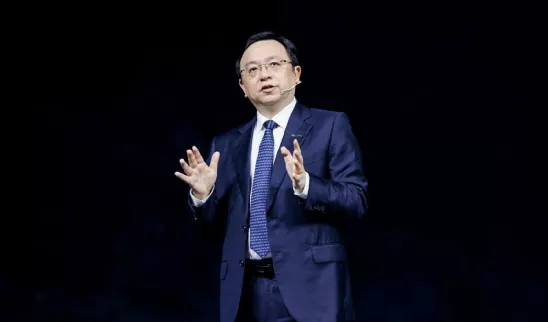“Challenging the Automobile Industry Chain Evolution” – Outing 100’s affiliated media focuses on the evolution of the automotive travel industry chain
By Zhou Pei
It is not surprising, yet it is quite surprising that BYD’s cumulative sales of new energy vehicles have exceeded 1 million units.
This number carries weight. Currently, only Tesla has achieved cumulative sales of over 1 million units in the global market. BYD is the second and the first in China’s new energy vehicle market.
It is not surprising because since its inception, BYD has set the ultimate goal of promoting electric vehicles. Since obtaining the qualification to manufacture cars in 2003, Wang Chuanfu has been striving for this goal. It is surprising because BYD, as the “bird” that flew out of the nest earliest, did not achieve cumulative sales of 1 million vehicles until 2021.
Strictly speaking, this 1 million-vehicle milestone came a bit late. In the industry, BYD’s early advantage is now being eroded by its competitors.
Is Wang Chuanfu worried? Actually, he is not.
More than 30 years ago, as a man who carried his luggage from Anhui to Changsha and danced in the campus canteen, he was always clear about what he could and couldn’t do. Perhaps for BYD, the battle was declared from the very beginning.
The electric vehicle and autonomous driving technologies are sweeping the whole industry, causing a rapid transformation of traditional platform architecture. Wang Chuanfu once stated that “2021 will be the first year of China’s electric vehicle development, and the industry landscape will be further adjusted.”
After reaching the 1 million-unit milestone, BYD has launched a new slogan, “Electrification is the first half, and intelligence is the second half.”
At the press conference, BYD also invited every tenth owner of their cars, along with the one millionth car owner He Youjun, to press the start button together, marking the entry into the second half of the company’s journey.
However, even after achieving cumulative sales of 1 million vehicles, BYD still has many tasks to complete and many goals to achieve.
The first half of the battle is not over yet.
Let’s talk about what has already been completed.
The first goal is to become an “electrification pioneer”.
BYD claims that the process of reaching 1 million units from 0 is the road of growth as an electrification pioneer.
This is true. The seemingly steady Wang Chuanfu has a character full of aggressiveness. In his 18-year career in car making, he has developed BYD into an enterprise that is always passionate about “Dream On, and All in”.
To understand BYD, one has to understand its logic.
Starting from the acquisition of Qinchi Auto, Wang Chuanfu realized that his enemies were the rules of the traditional Chinese automobile market at that time. Therefore, he took a different path and set electric vehicles as the ultimate goal. He once said, “BYD wants to make the water in the Three Gorges of China become oil by producing electric vehicles.”Byd, which is doing a booming battery business, has obtained admission tickets. Wang Chuanfu also said that he is standing on the shoulders of giants and car building is not something that can be achieved easily. Although it started with reverse engineering, Byd still became a technical geek that cannot be ignored.

Before fuel-powered cars were backed into a wall, Byd was approaching the new energy market. As early as 2004, the pure electric concept car, “ET”, made its debut at the Beijing Auto Show. It’s worth noting that this was the first new energy concept car from a Chinese auto brand.
This was the starting point of the ultimate goal. Starting from the time-honored corridor of the press conference venue and carving each step that Byd took in the new energy field along the way, there were both the joy of success and the disappointment of falling short of expectations.
The landing of technology in the market began in 2008 with the launch of the world’s first mass-produced plug-in hybrid new energy vehicle, the “F3DM”. Afterwards, the pace quickened. In 2012, Byd released the “Qin” model that embodied their second-generation DM hybrid powertrain, thus beginning the “Dynasty” series. Since 2016, new energy vehicle sales revenue has consistently exceeded that of fuel-powered cars. In 2021, the number of new energy vehicle models reached one million…
From “Qin” to “Song”, to “Tang”, and now “Han”, the “Dynasty” series of cars have indeed changed Byd with each new model that was launched, just as Wang Chuanfu had expected.
Starting from the launch of the first new energy vehicle, over 13 years, the industrial pattern has continued to deepen and the product line has been continuously expanded, from 0 to one million vehicles; Byd used data to send itself to the position of “pioneer”.
“Every fifth new energy vehicle in China is from Byd”, this market share is close to the market share of Volkswagen, a car brand of fuel-powered cars in China.
The second goal is “self-sufficiency”.
Behind the unique style of car-building is Byd shaking up the industry chain. On the one hand, there is intense competition in the battery business, yet they insist on producing cars, while on the other hand, they brandish the flag of Tier1 to form alliances with car makers.
Starting from traditional fuel-powered cars, Byd has tried to master all the key parts of the entire automobile production chain and do their own matching from battery to car building, almost all production chains of their electric vehicles, Byd have independent intellectual property rights.
Wang Chuanfu is a typical engineering male, who has an almost incomprehensible obsession with technology. “He trusts young engineers more than seasoned European and American techno experts and he believes everything can be built by himself,” the internal evaluation of Wang Chuanfu at Byd is unanimous.
 # 2017, CATL surpassed BYD in sales of power batteries. BYD was forced to change its strategy and had to be successful in two types of mainstream batteries.
# 2017, CATL surpassed BYD in sales of power batteries. BYD was forced to change its strategy and had to be successful in two types of mainstream batteries.
“The benefit of doing it this way is that the response is very fast. If you purchase from outside the company, the coordination cost is relatively high, and many market opportunities are easily missed.” In BYD’s six-sided building, there is a patent wall that is as high as 3 meters.
So far, BYD has accumulated 32,000 patent applications and 21,000 patent authorizations, ranking first in the new energy vehicle patent list. Now, BYD has two sets of products, pure electric and DM-i super hybrid.
There is a joke circulating in the industry: Wang Chuanfu met the glass king Cao Dewang with an unhappy face: “Lao Cao, I plan to make glass.” Cao Dewang quickly said: “No no no, I’ll buy a BYD car right away.”
Always insisting on “it’s better to make it yourself than buy it from outside”, BYD has developed 19 business units, including cars and batteries. They are focused on research and development, and their technical foundation is profound.

In the plug-in hybrid field, BYD has successively launched three DM-i models in the past 3 months, entering the mainstream price range of traditional car owners. The pure electric sedan “Han” gathers the latest technology such as blade battery, self-developed high-performance silicon carbide MOSFET motor control module, and is also the world’s first mass-produced car with Huawei 5G technology.
In addition, BYD announced that all its pure electric vehicles will be equipped with blade batteries, and puncture tests will be used as corporate standards; e-platform 3.0 released at the Shanghai Auto Show achieves the fastest 0-100 km/h acceleration of electric cars and the longest endurance mileage of 1000 kilometers…
The winds are surging, and BYD is wearing a battle robe, and patents have become BYD’s senior game of participating in the battle.
“They keep telling you that it can’t be done, the investment is large, and R&D is difficult, until you give up.” Wang Chuanfu never believed in this set. He believed that everything can be overthrown and overturned.
Now, his career focus is on the R&D of electric vehicles. The first half of the war has not yet been completed.
One million vehicles, not heavy enough
One success after another, under the heavy shadow, the achievement of one million vehicles has a different meaning. However, looking back at the footsteps of more than ten years, the meaning of these one million vehicles is still not heavy enough.
After all, the new energy market has been crawling forward for ten years and has never been as competitive as it is in 2021.The new energy vehicle subsidies have been creating waves and supporting the sales of new energy vehicles, thanks to government policies. For example, in the first few years when North Motor gained significant lead, it was the peak of the subsidy period. After the subsidies have declined, “what’s next for car manufacturers” has become a topic again. North New Energy (NNE) has become a typical case, and its sales have plummeted amidst market competition.
There’s no denying that F3DM’s birth allowed BYD to make a name for itself in the new energy vehicle market. However, during those years, the traditional fuel vehicles still reigned supreme, and BYD’s design was still unrefined, which did not make it satisfied in the new energy vehicle market. Meanwhile, across the ocean, Tesla was still in its infancy stage. The veteran auto companies in Detroit like General Motors and Ford looked down on Musk; Wall Street sang a chorus of bears.
At that time, the giants were not interested in electrification.
Fortunately, BYD did not slow down its R&D; its technical reserves kept accumulating and finally met the favor of the government.
Although Wang Chuanfu repeatedly claimed, “We hope to maintain our leading edge through continuous R&D,” we cannot ignore BYD’s strong national subsidies and the strong support of Shenzhen city in recent years.
Under the premise of acknowledging BYD’s R&D capabilities, we still have to consider the impact of policies.
From 2008 to 2014, BYD’s new energy vehicle sales were mediocre, but in the following two years, with the advent of the “542 strategy and Wangchao series,” sales skyrocketed. At this time, the first Tesla to achieve cumulative sales of one million vehicles was still in the red, and Musk was unable to boost production.
National support for new energy vehicles greatly benefited BYD. In 2016, its sales broke through 100,000 vehicles, and after two years in 2018, the Wangchao series significantly increased in both looks and sales, reaching 248,000 vehicles.
At the same time, under the strong stimulation of Shenzhen’s new energy vehicle market, the penetration rate of electric vehicles exceeded 30%. As a company in this market, BYD naturally enjoyed the biggest slice of the cake. The overwhelming number of BYD taxis on the streets is the proof.
In 2019, BYD was the Chinese market’s new energy vehicle sales champion for four consecutive years. If Tesla hadn’t entered the market, it would have won the title for the fifth year as well, we believe.
However, unexpected competition from Tesla pressed BYD down with its 368,000 vehicles sold. After that, NIO and XPENG emerged from the suffering, and in 2020, BYD’s new energy vehicle sales were 162,900 units, a decrease of 12.52% year-on-year.
Now, even with the advent of Han EV and Blade Battery, BYD no longer has the advantage of being the first, and achieving one million vehicles cannot be taken for granted.After all, the market has changed, and it’s not the era when BYD could beat whoever they wanted.
Of course, BYD couldn’t just beat whoever they wanted before. The growth in BYD’s new energy vehicle sales has only occurred within the past five years.
Sales are increasing, but the old problems remain.
The Dynasty series is the most representative model matrix of BYD’s new energy vehicles. It started with the Qin and ignited a storm in the market, but was quickly replaced by the next Dynasty model.
Almost all of them rely on 1 to 2 car models to exert force, with a short lifespan and is BYD’s old problem. In the past 3 years, BYD’s new energy vehicle sales have also slowly declined.
It wasn’t until the launch of the Han that BYD made a breakthrough in new energy vehicle models, maintaining sales of tens of thousands of cars per month with the help of blade batteries.
In fact, what Wang Chuanfu puts him at a disadvantage is that Tesla completed the production of 1 million new cars in March 2020. This outsider surpassed BYD, which had been brewing for more than a decade, with the help of its Shanghai factory.
Can it be tolerated? BYD doesn’t seem to care on the surface, but is secretly trying to catch up. Those who understand BYD’s character know that they’re not willing to back down.
Wang Chuanfu reintroduced the “DM-i,” emphasizing low fuel consumption and high endurance, striking a chord with the market.
As soon as the DM-i models of the Qin, Tang, and Song series were introduced, production capacity could not keep up, and BYD even apologized: “I’m sorry, we have too many orders and can’t keep up with production. We’ll work overtime.” However, whenever a car model has good sales, production capacity is affected, another one of BYD’s old problems.
“The arrival of the Han car finally broke BYD’s feeling of being stuck in the mud, and the super hybrid means that technology is added,” Wang Chuanfu said.
Older BYD fans are comforted.
The second half of the game, difficulty added.
So, with the support of 1 million vehicles, does BYD have enough strength to keep going?
BYD believes they do.
In fact, we all know that the real competition is in the next million cars, with real swords and guns, and fighting the good fight.
After the production of 1 million vehicles, BYD boldly claims, “Electrification is the first half, and intelligence is the second half” on forums. BYD, with its impressive performance, has officially entered the second half.
They even gave out the qualifying standards for the second half.”The only criterion for measuring whether a car is truly intelligent,” is whether the in-vehicle infotainment system can fully take over or replace all functions of a smartphone.
Many people agree with the idea of full integration, but replacing the smartphone is not possible. “I can spend five or six hours looking at my phone, but I cannot spend that long in the car.”
When BYD released this criterion in its PPT, someone quietly raised objections from the audience. However, we all know that Wang Chuanfu does not care about these minor differences.
Previously, he has said, “Replacing the smartphone inside the vehicle is the passing line for the performance of the in-car system,” and has been following this path. He also believes that only BYD’s DiLink is capable of doing so.
Although there is no unified standard in the automotive industry at present, with every manufacturer taking a different approach, it does not prevent BYD from having its own criteria for evaluation. As a provider of intelligent vehicle hardware standard platforms, BYD hopes to open up all sensing and executing systems of vehicles.
Implicitly, it is clear that BYD is doing its intelligent systems, similar to what it does with electric cars, by “doing it all themselves.” They have also established a global developer platform, where top developers worldwide can customize and create more interesting machine applications.
In April 2018, BYD released the DiLink intelligent infotainment system, aiming for an open software ecosystem like Android. Positioned as “an intelligent and open hardware and software platform and ecosystem services,” it consists of four major components: Di platform, Di cloud, Di ecosystem, and Di open, and is firstly used on the Tang model.
As for its market performance, Tang owners have spoken up, “The traffic is too small, and the interface operation is not smooth, so I still use my smartphone.” The experience of using the DiLink system on models like Tang and Yuan shows that it is an open but imperfect system.
Although BYD has invested heavily, it has to admit that it has played an average game in the battle for intelligent interconnection.
BYD has been striving to realize intelligence, but as a traditional car company, its steps have been too small and its goals too low. With automobiles heading towards intelligence, and internet companies now creating cars, BYD has struggled to keep up.
Unlike traditional car companies, new players like NIO and XPeng have survived by embracing Internet thinking, making intelligence their core competitiveness, being good at refining single-point technologies repeatedly, and expanding into multiple domains. They have now become the highest standard in their respective fields.In 2020, XPeng’s XPilot 3.0 was known as the smartest driving system with the most complex perception architecture and the best overall performance. Similarly, NIO ET7’s first production line validation car, equipped with four Orin chips from NVIDIA and an 8 million-pixel camera, is also a leader in autonomous driving technology.
Autonomous driving and artificial intelligence are undoubtedly a competitive field that can only be discussed in terms of technology.
The competition in autonomous driving in 2021 has already been beyond imagination, with unexpected rivals such as Midea and Huo La La emerging each day.
Internet companies have played to their strengths, while BYD needs to be able to respond with various tactics.
Securing a winning position is extremely difficult. Despite the Di Link intelligent system’s three years of iteration with a multi-screen design that brings mobile ecosystems into the car with an open Android system that can download any app, it has not been recognized by the market, at least not for the Han model.
“The autonomous driving system of the Han EV ranks at the bottom among new energy vehicles and is average to below-average in gasoline vehicles. BYD has focused on the three electrification technologies. “Even though the DiLink system has evolved to version 3.0 and is the only system in the world that can replace mobile phones in cars,” said BYD.
However, BYD does not like to succumb to defeated spirits. In the dictionary of Wang Chuanfu, the founder of BYD, the word “subversion” is written.
With BYD’s determination, it is only a matter of time.
This article is a translation by ChatGPT of a Chinese report from 42HOW. If you have any questions about it, please email bd@42how.com.
